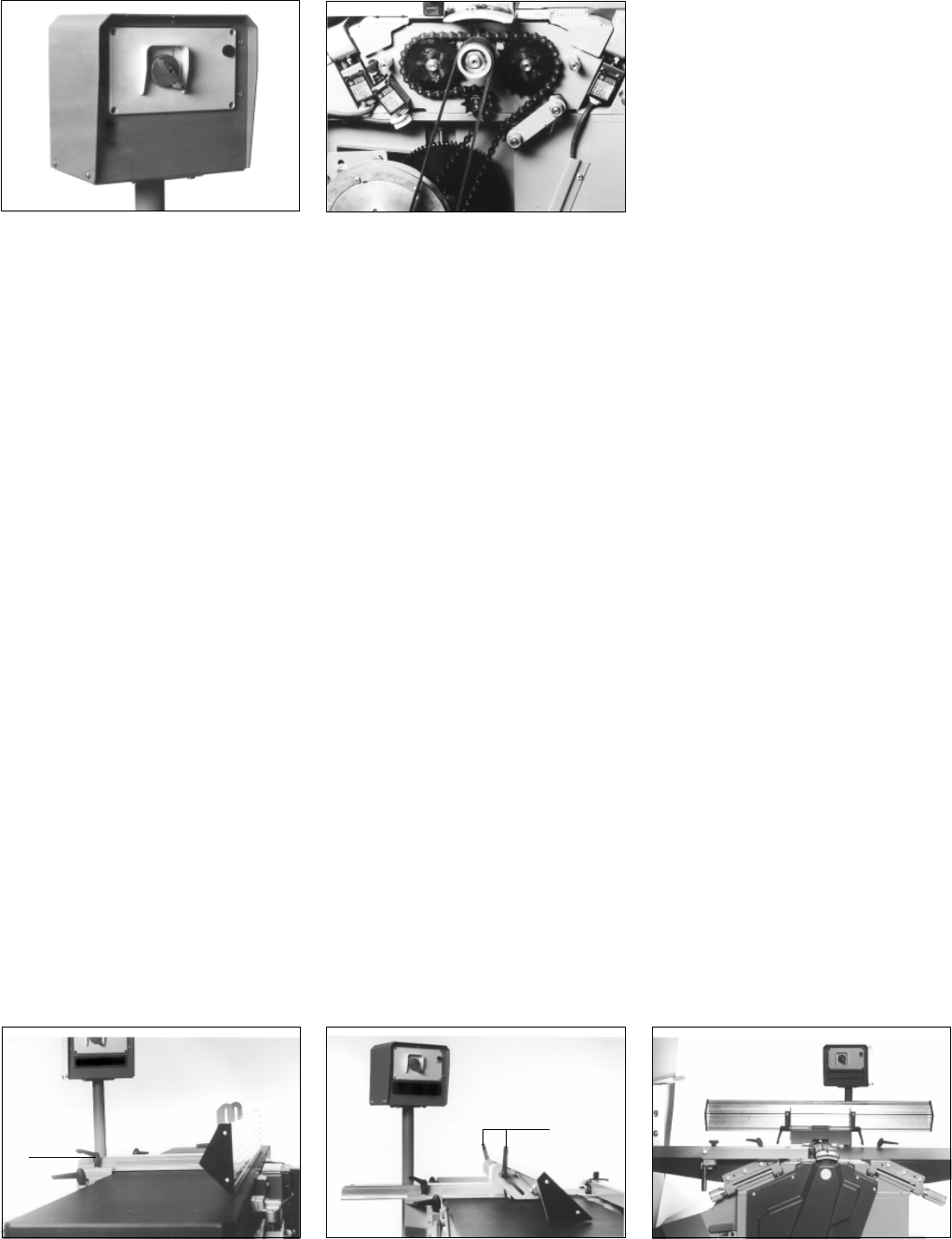
12 Controls
12.1 Switch Terminal/Electrical Equipment
The raised switch panel can be turned
to point towards the operator position
for easy access. Turn rotary switch
clockwise to start machine, turn coun-
ter-clockwise to switch the machine
off. To prevent unauthorized use the
switch can be blocked with a padlock.
12.2 Switch/Overload Protection
The switch is equipped with a no-volt release solenoid (magnetic switch), to prevent start-up after a power failure. If the
machine is not connected to the power mains the switch does not engage. In the event of a power failure the machine
has to be restarted. In case of an overload of the motor the build-in motor protection relay trips and cuts the power to
the motor. If the motor is shut off repeatedly by the overload relay, check machine (motor brake action, blade sharpness,
low voltage etc.) A cooling down period of 10 min. is recommended before switching ON again.
12.3 Motor Brake
The motor supplied with this machine is equipped with an electro-mechanical motor brake, designed for a long service
life. Friction, however, causes the brake pad to wear. If the braking action fades (time to cutterblock standstill exceeds
10 sec.) the motorbrake has to be replaced. The max. permissible number of 10 switching actuation per hour should
not be exceeded.
12.4 Canting Fence Adjustment
Loosening the ratchet lever (A) al-
lows for lateral adjustment of the fence
carrier.
After loosening both ratchet levers (B)
the fence can be set from the 90°
position to the 45° position.
When changing from planing to thick-
nessing mode the fence is swung up.
B
A
Three limit switches, located behind
the thicknesser drive gear cover, pre-
vent the starting of the machine if it is
not properly set for the planing or
thicknessing mode. The limit switches
will also switch the machine off if
- the planing beds are swung up
- the chip ejection hood is swung
from the cutterblock when thick-
nessing


















